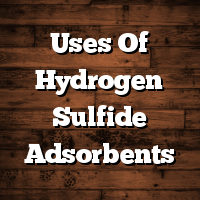Cleaning or dirt-removing products are indispensable nowadays as hygiene is an essential and basic requirement for every sector in the world.
Industrial surfactants are essential compounds that build up detergents. They can be added to remove or erase dirt from clothes, floors, or even skin and are very popular and extensively used in industries. The term surfactant came from combining the words; surface-active agent.
The earliest known surfactants are soaps and they were derived from glycerides or fats because they are primarily esters that are formed by glycerol, fatty acids, and trihydric alcohol.
How do Industrial Surfactants work?
Industrial stepan surfactants generally function by disintegrating the dirt/oil and water surface. Industrial surfactants also hold on to the dirt and oils through suspension and allow their easy removal.
Industrial Surfactants act in this manner because they accommodate both hydrophobic or water-resisting/hating group (alkyl chain) and a hydrophilic or water-attracting/loving group (acid anion: SO3-or -CO2). This is also known as an amphipathic compound. Water molecules tend to gather close to the latter and water-insoluble molecule gather close to the former.
Applications of Industrial Surfactants
- Soaps and detergents: Surfactants are basically tensioactive compounds that are responsible for the property by which a detergent can clean and it can be produced from a natural or a synthetic origin. The efficacy of an industrial surfactant detergent can be determined by the ability to lower the surface tension. They tend to increase the hydrophobic molecule’s aqueous solubility and hence, it reduces the interfacial tension or surface tension of water and oil interfaces.
However, there are additional ingredients as well in detergents and surfactant soap like; bulking agents (water and sodium sulfate), anti-caking agents (aluminum silicate), builders (like sodium aluminosilicates to remove magnesium and calcium ions), oxidizing agents (like sodium percarbonate and sodium perborate to result in the formation of hydrogen peroxide when reacted with hot water) to remove a stain, bleach activators used for washes in low temperature.
Also, a few more ingredients can be added like buffering agents for keeping a normal pH value, structurants (to provide a fabric shape), optical brighteners, sequestrants ( reacts with free ions of the metal to avoid scum formation), antifoaming agents, enzymes like proteases, amylases, and lipases to remove proteins, starches, and fats respectively, anti-redeposition agents, conditioning agent, emulsifier, and colorants.
- Washing liquids: These can contain around thirteen to forty percent of surfactants (alkyl sulfates/ ether). These liquids also come in the form of shower gels, shampoos, fabric conditioners, and hair conditioners which are formed by using cationic surfactants combined with non-ionic surfactants in small amounts. The conditioners aren’t products used for cleansing purposes hence the cationic surfactants get deposited on the negatively charged cloth fiber or hair giving them a lubricating benefit.
Endnote
Synthetic industrial surfactants cause environmental pollution so bio-ethically created industrial surfactants are also available in recent times. Industrial surfactants require high efficacy required for a high-intensity cleaning jobs. They fundamentally perform by reducing the surface tension between oil and water surface and industrial surfactants are way more efficient than conventional ones.
Contact Us:
Chemical Products Industries, Inc.
Phone: (800) 624-4356
